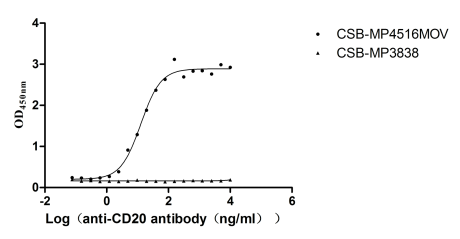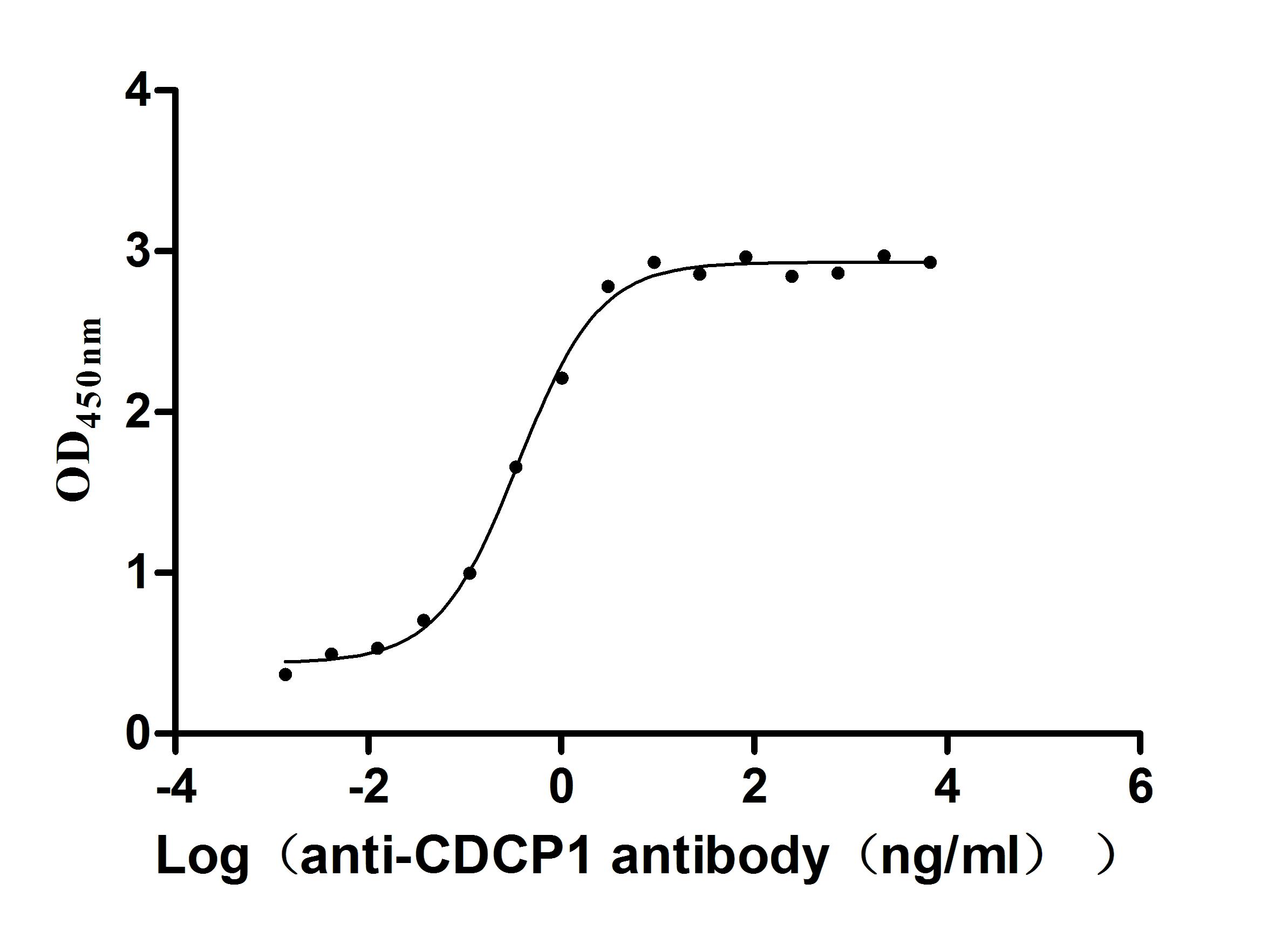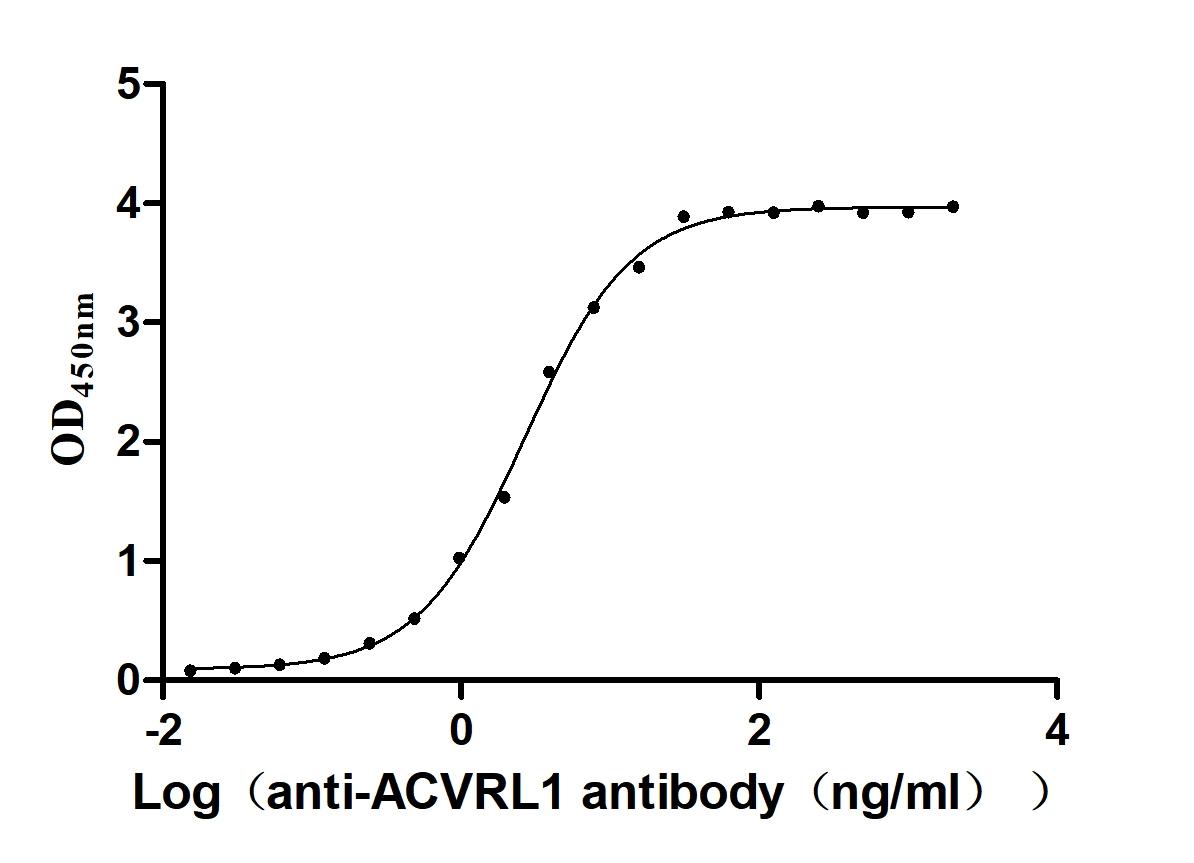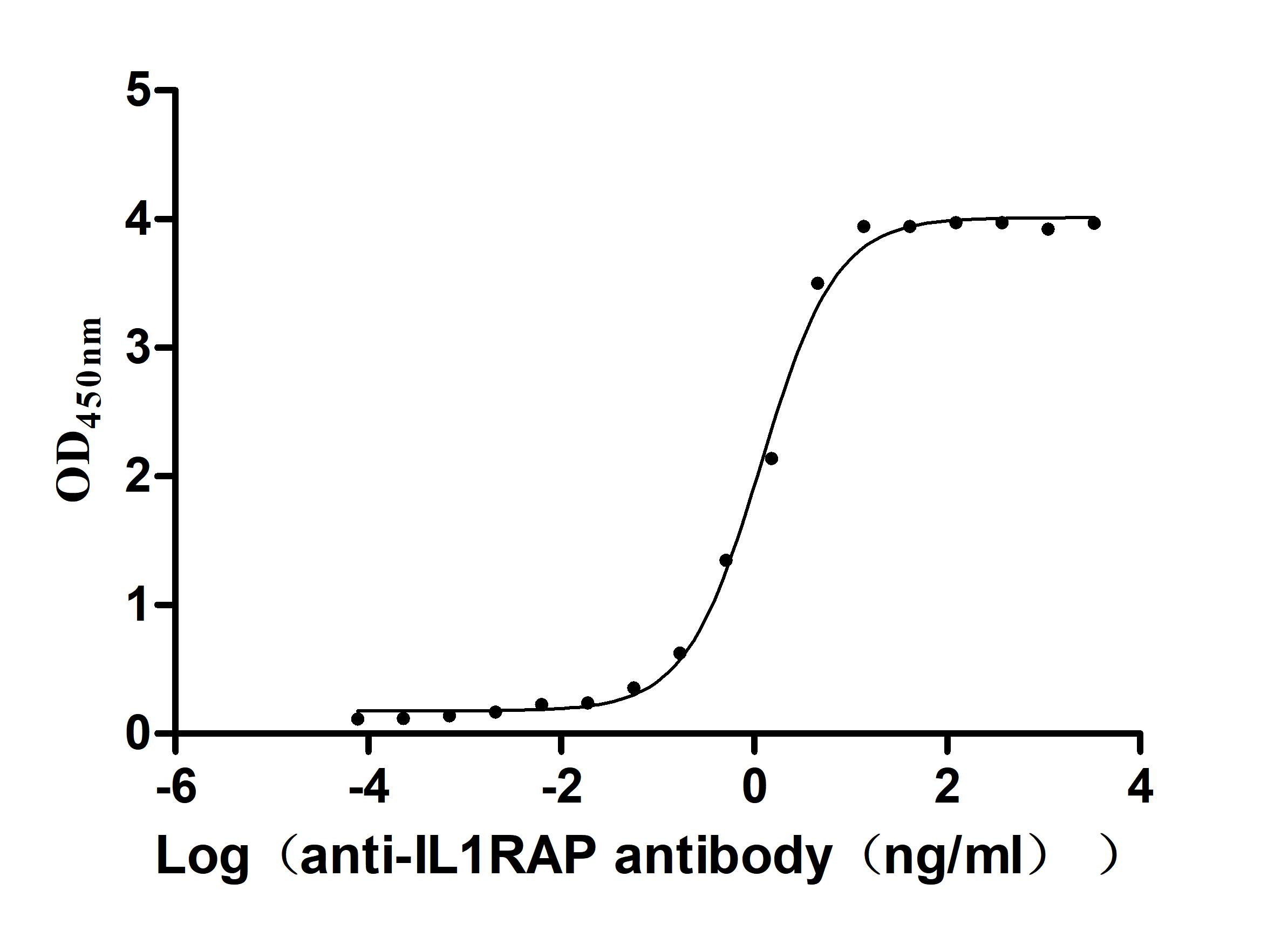Recombinant Human Aldo-keto reductase family 1 member C1 (AKR1C1 DDH DDH1)
-
中文名稱:
-
貨號:CSB-YP001542HU
-
規格:
-
來源:Yeast
-
其他:
-
中文名稱:
-
貨號:CSB-EP001542HU
-
規格:
-
來源:E.coli
-
其他:
-
中文名稱:
-
貨號:CSB-EP001542HU-B
-
規格:
-
來源:E.coli
-
共軛:Avi-tag Biotinylated
E. coli biotin ligase (BirA) is highly specific in covalently attaching biotin to the 15 amino acid AviTag peptide. This recombinant protein was biotinylated in vivo by AviTag-BirA technology, which method is BriA catalyzes amide linkage between the biotin and the specific lysine of the AviTag.
-
其他:
-
中文名稱:
-
貨號:CSB-BP001542HU
-
規格:
-
來源:Baculovirus
-
其他:
-
中文名稱:
-
貨號:CSB-MP001542HU
-
規格:
-
來源:Mammalian cell
-
其他:
產品詳情
-
純度:>85% (SDS-PAGE)
-
基因名:AK1C1
-
Uniprot No.:
-
別名:Aldo-keto reductase family 1 member C1; EC 1.1.1.-; EC 1.1.1.112; EC 1.1.1.209; EC 1.1.1.210; EC 1.1.1.357; EC 1.1.1.51; EC 1.1.1.53; EC 1.1.1.62; EC 1.3.1.20; 20-alpha-hydroxysteroid dehydrogenase; 20-alpha-HSD; EC 1.1.1.149; Chlordecone reductase homolog HAKRC; Dihydrodiol dehydrogenase 1; DD1; High-affinity hepatic bile acid-binding protein; HBAB; AKR1C1 DDH DDH1
-
種屬:Homo sapiens (Human)
-
蛋白標簽:Tag?type?will?be?determined?during?the?manufacturing?process.
The tag type will be determined during production process. If you have specified tag type, please tell us and we will develop the specified tag preferentially. -
產品提供形式:Liquid or Lyophilized powder
Note: We will preferentially ship the format that we have in stock, however, if you have any special requirement for the format, please remark your requirement when placing the order, we will prepare according to your demand. -
復溶:We recommend that this vial be briefly centrifuged prior to opening to bring the contents to the bottom. Please reconstitute protein in deionized sterile water to a concentration of 0.1-1.0 mg/mL.We recommend to add 5-50% of glycerol (final concentration) and aliquot for long-term storage at -20℃/-80℃. Our default final concentration of glycerol is 50%. Customers could use it as reference.
-
儲存條件:Store at -20°C/-80°C upon receipt, aliquoting is necessary for mutiple use. Avoid repeated freeze-thaw cycles.
-
保質期:The shelf life is related to many factors, storage state, buffer ingredients, storage temperature and the stability of the protein itself.
Generally, the shelf life of liquid form is 6 months at -20°C/-80°C. The shelf life of lyophilized form is 12 months at -20°C/-80°C. -
貨期:Delivery time may differ from different purchasing way or location, please kindly consult your local distributors for specific delivery time.Note: All of our proteins are default shipped with normal blue ice packs, if you request to ship with dry ice, please communicate with us in advance and extra fees will be charged.
-
注意事項:Repeated freezing and thawing is not recommended. Store working aliquots at 4°C for up to one week.
-
Datasheet :Please contact us to get it.
相關產品
靶點詳情
-
功能:Cytosolic aldo-keto reductase that catalyzes the NADH and NADPH-dependent reduction of ketosteroids to hydroxysteroids. Most probably acts as a reductase in vivo since the oxidase activity measured in vitro is inhibited by physiological concentrations of NADPH. Displays a broad positional specificity acting on positions 3, 17 and 20 of steroids and regulates the metabolism of hormones like estrogens and androgens. May also reduce conjugated steroids such as 5alpha-dihydrotestosterone sulfate. Displays affinity for bile acids.
-
基因功能參考文獻:
- AKR1C1 activates STAT3 pathway to promote NSCLC metastasis. PMID: 29344298
- Decreased invasion caused by AKR1C1 knockdown suggests a novel role of AKR1C1 in cancer invasion, which is probably due to the regulation of Rac1, Src, or Akt. An inflammatory cytokine, interleukin-1beta, was found to increase AKR1C1 in bladder cancer cell lines. PMID: 27698389
- Data show that increased levels of AKR1C1/C2 enhanced the sensitivity of esophageal squamous cell carcinoma (ESCC) cells to ethyl-3,4-dihydroxybenzoate (EDHB). PMID: 26934124
- the present study suggests that AKR1C1, AKR1C2, AKR1C3, and AKR1C4 are closely associated with drug resistance to both CDDP and 5FU, and that mefenamic acid, an inhibitor of AKR1C, restores sensitivity through inhibition of drug-resistance in human cancer cells. PMID: 28259989
- Activation of AKR1C1/ERbeta induces apoptosis by downregulation of c-FLIP in prostate cancer cells. PMID: 25816367
- results suggest a gender-specific modulatory effect of AKR1C1 on anxiety levels, most likely through changes in progesterone and allopregnanolone levels within and outside the brain PMID: 24390875
- Studies indicate that mutations in aldo-keto reductase family 1 (AKR1) enzymes AKR1C1 and AKR1C4 are responsible for sexual development dysgenesis and mutations in AKR1D1 are causative in bile-acid deficiency. PMID: 24189185
- activation of the Nrf2/AKR1C axis may contribute to oxaliplatin resistance in gastric carcinoma PMID: 23933386
- The involvement of up-regulated AKR1C1, AKR1C3 and proteasome in CDDP resistance of colon cancers. PMID: 23165153
- Which promoted significant reduction of AKR1C1 and AKR1C2 expression. PMID: 23183084
- Data suggest that interleukin-1beta facilitates progesterone metabolism in cervical fibroblasts by regulating expression of AKR1C1 and AKR1C2. PMID: 22064385
- It was concluded that the truncated E6 protein of human papillomavirus 16, known as E6*I, has a novel function in upregulating expression of human AKR1C. PMID: 22278827
- role of AKR1C1in the metabolism of testosterone and progesterone via the 5beta-reductase pathway. PMID: 21521174
- enhanced metabolism of progesterone by SRD5A1 and the 20alpha-HSD and 3alpha/beta-HSD activities of AKR1C1, AKR1C2 and AKR1C3 PMID: 21232532
- analysis of single nucleotide polymorphisms of AKR1C1 and AKR1C2 PMID: 21217827
- Functionally expressed human AKR1C1 (20alpha-hydroxysteroid dehydrogenase) in the fission yeast Schizosaccharomyces pombe and demonstrate the ability of the resulting yeast strain to efficiently catalyze the reduction of progesterone or dydrogesterone. PMID: 20727920
- non-stereo-selective cytosolic human brain tissue 3-ketosteroid reductase is refractory to inhibition by AKR1C inhibitors PMID: 20673851
- Expression of dihydrodiol dehydrogenase in the resected stage I non-small cell lung cancer PMID: 11956619
- Reduction of dihydrodiol dehydrogenase expression is associated with resected hepatocellular carcinoma PMID: 12579257
- progesterone itself contributes to the regulation of local progesterone concentration through 20alpha-HSD levels in endometrial stromal cells at peri-implantation periods. PMID: 12733716
- X ray diffraction and site-directed mutagenesis: identification of an alternative binding site for C21-steroids PMID: 12899831
- Glaucomatous optic nerve head astrocytes express a higher level of 3 alpha-HSD isoform AKR1C1 and its mRNA than normal astrocytes. PMID: 13678667
- Expression of SRD5A1 (5alphaR1) and SRD5A2 (5alphaR2) is elevated, and expression of AKR1C1 (20alpha-HSO), AKR1C2 (3alpha-HSO3) and AKR1C3 (3alpha-HSO2) is reduced in tumorous as compared to normal breast tissue. PMID: 15212687
- Loss of AKR1C1 and AKR1C2 in breast cancer results in decreased progesterone catabolism, which, in combination with increased PR expression, may augment progesterone signaling by its nuclear receptors. PMID: 15492289
- mRNA abundance and activity of AKR1C enzymes in abdominal adipose tissue are positive correlates of adiposity in women. Increased progesterone and/or dihydrotestosterone reduction in abdominal adipose tissue may impact fat cell metabolism. PMID: 15494612
- The expression of AKR1C1 and AKR1C3 in endometrial cancer will govern the ratio of P:E2. PMID: 16338060
- DDH may play important roles in tumor progression of squamous cell carcinoma via induction of apoptosis- and drug-resistance PMID: 16361083
- Activity of AKR1C1 in overall oracin reduction was one order of magnitude higher compared to AKR1C2 and 1C4. PMID: 17618725
- Carbonyl reductase-1 (CBR1), microsomal prostaglandin E synthase-1 and 2 (mPGES-1, mPGES-2), cytosolic prostaglandin E synthase (cPGES), aldoketoreductase (AKR1C1) and prostaglandin F synthase (AKR1C3) were all expressed in hair follicles. PMID: 17697149
- Carbonyl reductase-1 (CBR1), microsomal prostaglandin E synthase-1 and 2 (mPGES-1, mPGES-2), cytosolic prostaglandin E synthase (cPGES), the aldoketoreductase AKR1C1 and the prostaglandin F synthase AKR1C3 were all expressed in hair follicles. PMID: 17697149
- Overexpression of AKR1C1 counteracted the S-phase accumulation of cells and apoptosis caused by MTX treatment. This suggests a role of AKR1C1 in cell proliferation. PMID: 17945194
- Incubations of normal human bronchial epithelial cells with individual heavy metals showed that the upregulation of AKR1C1 and AKR1C2 was predominantly caused by lead. PMID: 18654764
- Induction of preadipocyte differentiation increased expression levels of AKR1C1 and modified the pattern of progesterone metabolism substantially, leaving 20alpha-hydroxyprogesterone as the main metabolite generated. PMID: 18984031
- human AKR1C enzymes (AKR1C1-4) are able to reduce conjugated steroids such as Dht-17beta-glucuronide (DhtG), Dht-17beta-sulfate (DhtS), and Tib-17beta-sulfate (TibS) PMID: 19218247
- AKR1C subfamily genes are stress-inducible and might function as survival factors in keratinocytes. PMID: 19320734
- AKR1C isoforms as a novel target of jasmonates in cancer cells. PMID: 19487289
- Human AKR1C enzymatic activity plays crucial roles on induction of neoplastic transformation of mouse NIH3T3 cells. PMID: 19696165
顯示更多
收起更多
-
亞細胞定位:Cytoplasm, cytosol.
-
蛋白家族:Aldo/keto reductase family
-
組織特異性:Expressed in all tissues tested including liver, prostate, testis, adrenal gland, brain, uterus, mammary gland and keratinocytes. Highest levels found in liver, mammary gland and brain.
-
數據庫鏈接:
Most popular with customers
-
Recombinant Human Tumor necrosis factor receptor superfamily member 8 (TNFRSF8), partial (Active)
Express system: Mammalian cell
Species: Homo sapiens (Human)
-
Recombinant Mouse Semaphorin-4D (Sema4d), partial (Active)
Express system: Mammalian cell
Species: Mus musculus (Mouse)
-
Recombinant Rat Microtubule-associated protein tau (Mapt) (Active)
Express system: Mammalian cell
Species: Rattus norvegicus (Rat)
-
Recombinant Mouse Claudin-18.2 (Cldn18.2)-VLPs (Active)
Express system: Mammalian cell
Species: Mus musculus (Mouse)
-
Recombinant Macaca fascicularis Membrane spanning 4-domains A1 (MS4A1)-VLPs (Active)
Express system: Mammalian cell
Species: Macaca fascicularis (Crab-eating macaque) (Cynomolgus monkey)
-
Recombinant Human CUB domain-containing protein 1 (CDCP1), partial (Active)
Express system: Mammalian cell
Species: Homo sapiens (Human)
-
Recombinant Human Serine/threonine-protein kinase receptor R3 (ACVRL1), partial (Active)
Express system: Baculovirus
Species: Homo sapiens (Human)
-
Recombinant Human Interleukin-1 receptor accessory protein (IL1RAP), partial (Active)
Express system: Mammalian cell
Species: Homo sapiens (Human)


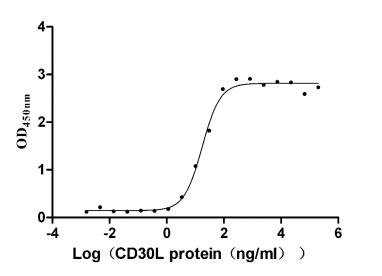
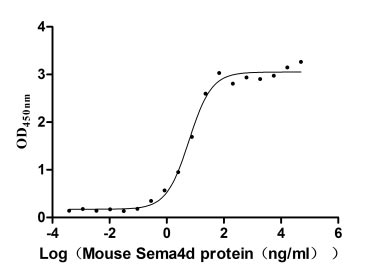
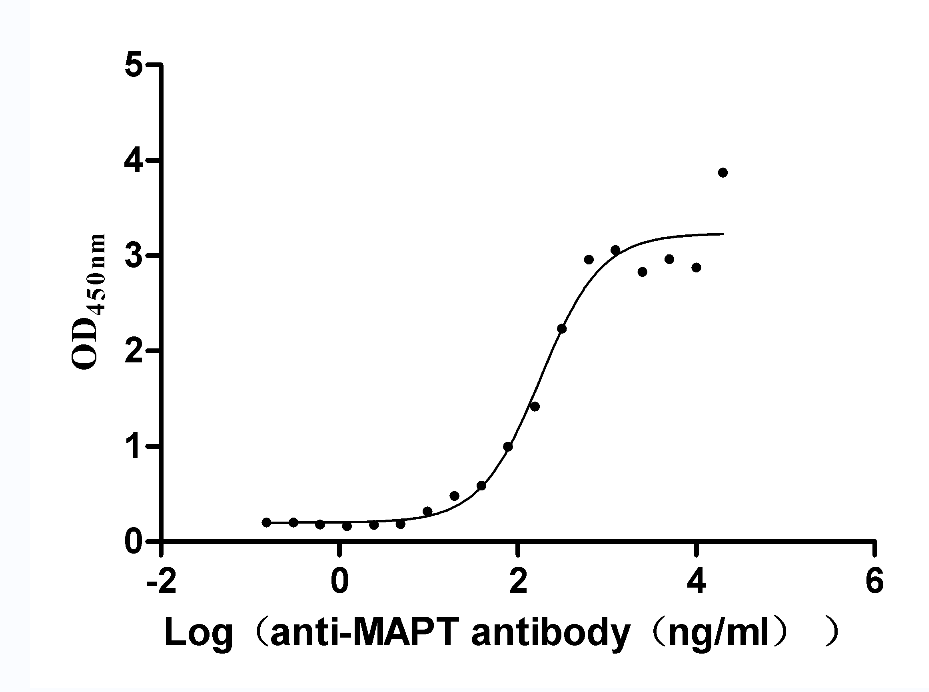
-AC1.jpg)
